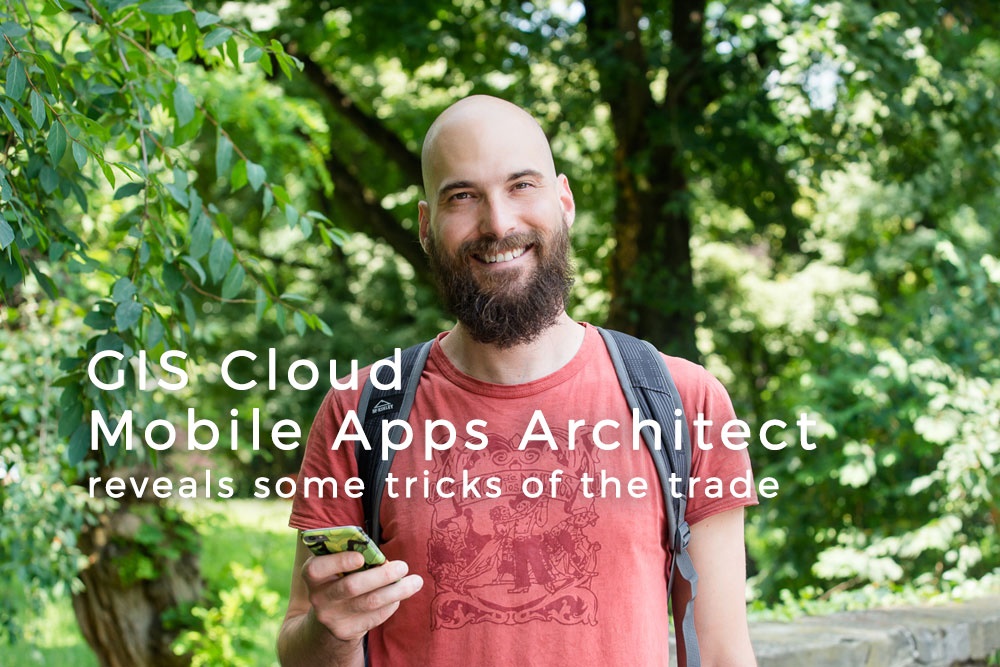We talked to Nenad Filipović, our Senior Frontend Developer, and Mobile Apps Architect. He shared some insight into his daily work routine and shared advice to young developers who want to dive into the world of GIS and mapping apps.
1. Can you describe your regular working day and responsibilities in working with GIS Cloud Dev team?
Depending on the day, things I do range from developing new features on our frontend, to working on our mobile apps or participating in tech strategy meetings. Some days it’s just bug fixing.
My schedule is rather flexible which means I have the freedom to dedicate my time and energy to tasks in a way I consider optimal.
2. How did you end up working with GIS and mapping apps?
My first job as a developer was in another GIS software company. I was still in college, and this was a just a part time job at first. I had the basics of programming down, but knew very little about cartography or GIS. Once on the job, my new colleagues began explaining how the stuff actually works and what it does and I was fascinated! I have always found data visualization interesting, and having data shown on a map surely beats a bar graph or a pie chart.
I stayed with the company well after finishing my degree and then got asked to join GIS Cloud.
3. How did your work on GIS Cloud platform evolve through time, from the beginning to the point where you are now?
Starting out, I did almost everything apart from tinkering with the map engine itself.
I’ve had a thing for JavaScript for quite some time, so over the years I’ve focused more on frontend part and I’m also doing most of the mobile hybrid work.
Mobile Data Collection is probably the most important part I did for the platform. I guess Crowdsourcing will be next.
4. What technologies and tools do you use?
For me, it’s JavaScript as much as possible. The old platform is pure JS with jQuery, and now we use React with Redux. I’ve been using Sublime Text for years, but I am switching to VS Code.
Oh, and Cordova and React Native for our mobile hybrid apps.
5. What is the most challenging part of your work?
With a platform so big, and so many tasks still in the backlog, I often find myself solving problems, not in the way I would prefer to. Sometimes there just isn’t enough time to write a perfect piece of code which handles all cases of a particular problem. Balancing the inner engineer against a real-life timeframe is something I am still trying to get a grasp on.
6. Are there any particular skills required or recommended for GIS developers? What would you recommend to young developers just entering the world of mapping apps?
There’s a lot of different stuff we do, and a lot of it has little to do with GIS. If you’re a software developer you’ve probably done this more than a few times: set up a database, apply some interfaces to have frontend and backend talk to each other, give users a GUI to interact with the data, rinse, repeat. And then there’s the added dimension of location – this is where it gets interesting and GIS-y. So, what one should do is take in the basics of cartography as soon as you can.
Learn about geographic reference systems and map projections. Chance is you’ll never have to deal with the maths behind this directly, but it helps if you know it’s there. For instance, putting points on a map using their GPS coordinates is a piece of cake, but trying to determine how far they are from one another is not as simple as it sounds.
Platforms and APIs can do calculations for you, but even then, understanding what goes inside them makes you better at using them.
7. What would you highlight as the best part of your work at GIS Cloud?
Once you get that whatever you do have a direct impact on the outcome of our product, YOUR product, you start the appreciating it. It still feels great to push out a new feature or an app or to squash a bug which was holding your clients back.
8. Being a developer, you spend a lot of time sitting at your desk, stuck to your computer screen. How do you achieve work-life balance?
I sometimes go camping, sometimes for a hike, at times I climb or go for a bike ride. Sometimes I go out and drink, go to a concert, listen to some music or play a game. I do this alone or with my girlfriend or with my friends. Not sure about balance, but it’s never boring.







